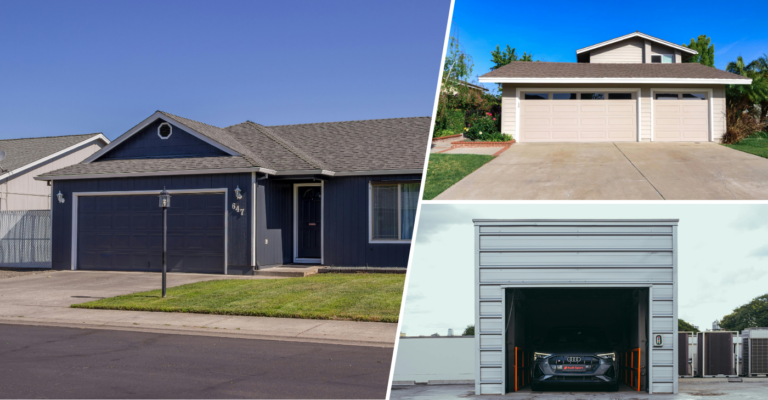Why do you really need an asbestos survey? Essential insights
Asbestos was once hailed as a miracle material, widely used in construction due to its resistance to fire, heat, and electrical damage. However, as the dangers of asbestos became apparent, it was banned in many countries. Despite these bans, asbestos-containing materials (ACMs) remain in many older buildings, posing a significant health risk if disturbed. This is where an asbestos survey becomes crucial. In this article, we’ll explore the essential reasons why an asbestos survey is not just recommended but necessary.
Understanding the risks of asbestos
Asbestos is composed of microscopic fibers that can easily become airborne if the material is disturbed. Once inhaled, these fibers can lodge in the lungs and other tissues. Its leading to serious health issues such as asbestosis, lung cancer, and mesothelioma, also particularly aggressive and often fatal cancer. The latency period for these diseases can be several decades, meaning the health effects of asbestos exposure might not become apparent until long after the initial exposure. It was once widely used in a variety of building materials including:
- Asbestos was used as insulation in walls, ceilings, and roofs.
- Vinyl asbestos tiles were a popular flooring choice in the mid-20th century.
- Asbestos was used in textured coatings applied to ceilings and walls.
- Asbestos was used in pipe insulation and gaskets.
Legal obligations and regulations
In many countries, property owners, landlords, and employers are legally required to manage asbestos risks in buildings. The Control of Asbestos Regulations, for instance, mandates that those responsible for the maintenance and repair of non-domestic premises must identify and manage asbestos in their properties. Failure to comply with these regulations can lead to hefty fines and legal action. An asbestos survey is the first step in ensuring compliance with these laws, protecting not only the health of occupants but also the property owner from legal liabilities.
Identifying asbestos containing materials (ACMs)
An asbestos survey is essential for identifying asbestos containing materials (ACMs) in a property. These materials are not always visible or obvious. They can be hidden in insulation, floor tiles, ceiling tiles, roofing materials, and even in certain types of paint. A professional asbestos surveyor will thoroughly inspect the property, taking samples of suspected materials and testing them in a laboratory to confirm the presence of asbestos. This process is vital for accurately assessing the extent of the asbestos risk in your property.

The Importance of asbestos surveys
An asbestos survey is a professional inspection conducted to identify the presence of ACMs in a building. Here’s why it’s indispensable:
Planning safe renovations or demolitions
If you’re planning to renovate or demolish a building, an asbestos survey is an absolute must. Disturbing asbestos-containing materials during construction activities can release dangerous fibers into the air, putting workers and occupants at risk. An asbestos survey will identify areas where ACMs are present, allowing you to plan the work safely and in compliance with health and safety regulations. This might involve hiring licensed asbestos removal contractors to safely remove or encapsulate the material before any work begins.
Protecting occupant health
The health and safety of everyone in a building should always be a top priority. Whether you’re a homeowner, landlord, or business owner, you have a duty of care to protect the people who live, work, or visit your property. An asbestos survey helps you fulfill this responsibility by identifying and mitigating asbestos risks before they can cause harm. This is particularly important in buildings such as schools, hospitals, and residential care homes, where vulnerable individuals may be more susceptible to the health effects of asbestos exposure.
Preserving property value
Properties with unidentified asbestos risks can suffer from decreased market value. Potential buyers or tenants are likely to be wary of investing in a building that might harbor hidden health hazards. By conducting an asbestos survey, you can reassure prospective buyers or tenants that the property is safe, well-maintained, and free from asbestos-related risks. This can make your property more attractive on the market and potentially increase its value.
Avoiding costly repairs and legal fines
Ignoring the need for an asbestos survey can lead to much more expensive problems down the line. If asbestos is discovered during unplanned renovations or maintenance work, it can halt the project, leading to delays and increased costs. In addition, if asbestos fibers are released into the environment, the cleanup costs can be substantial. Furthermore, non-compliance with asbestos regulations can result in significant fines. An asbestos survey is a small investment that can save you from much larger financial burdens in the future.
Due diligence
For those considering purchasing a property built before the 1980s, conducting an asbestos survey is a critical part of due diligence. It helps in assessing potential risks and costs associated with asbestos removal or management, ensuring that the investment is made with full awareness of the property’s condition.

What to expect from an asbestos survey
An asbestos survey involves a thorough visual inspection of the building, including less accessible areas such as the attic, basement, and crawl spaces. The surveyor looks for signs of asbestos-containing materials, such as old insulation, textured coatings, or vinyl floor tiles. In some cases, the surveyor may take samples for laboratory analysis to confirm the presence of asbestos.
There are two main types of asbestos surveys:
- Management survey: This is a standard survey used to locate ACMs that could be disturbed during normal occupancy, including routine maintenance and minor renovations. It involves minor intrusive work and some disturbance to the building fabric.
- Refurbishment/demolition survey: This more intrusive survey is required before any renovation or demolition work. It aims to identify all ACMs within the building that could be disturbed during the planned work, ensuring that they can be safely managed or removed beforehand.
When to conduct an asbestos survey
Timing is crucial when it comes to asbestos surveys. Here are the key situations when you should consider conducting one:
- If you’re planning to renovate or demolish a building, an asbestos survey is vital. It identifies any ACMs that need to be safely removed or managed before work begins, protecting workers and occupants from exposure to harmful asbestos fibers.
- If you’re considering buying a property built before the 1980s, conducting an asbestos survey should be part of your due diligence. It helps you assess the potential risks and necessary safety measures, ensuring that you’re making an informed decision.
- If you notice any materials in your home or business that could potentially contain asbestos—such as old insulation, vinyl floor tiles, or textured ceilings—it’s important to have a professional asbestos survey conducted. Ignoring these signs could result in unintentional exposure to dangerous asbestos fibers.
Final thoughts – Why an asbestos survey is essential for safety and compliance
Conducting an asbestos survey is a critical step in safeguarding the health and safety of everyone who occupies or works in a building, particularly those built before the 1980s. Asbestos-containing materials, if disturbed, can release harmful fibers that pose serious health risks. An asbestos survey not only ensures compliance with legal regulations but also protects property value and prevents costly repairs and legal penalties. Whether you are planning renovations, considering purchasing a property, or suspect the presence of asbestos, a professional asbestos survey provides essential insights and peace of mind.







